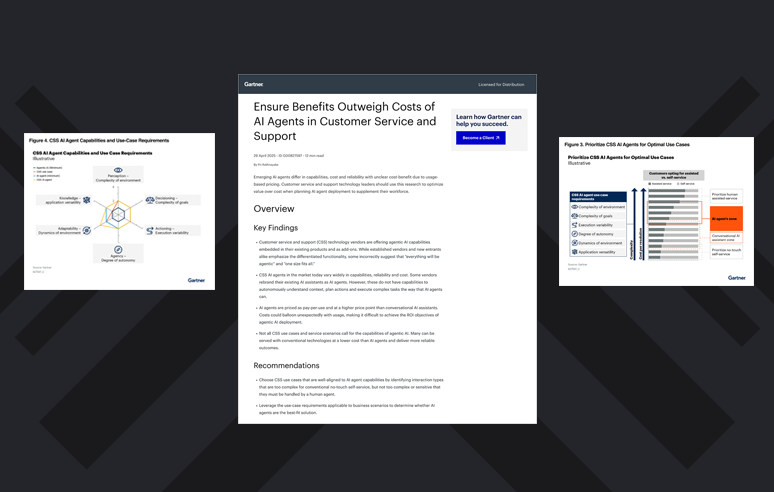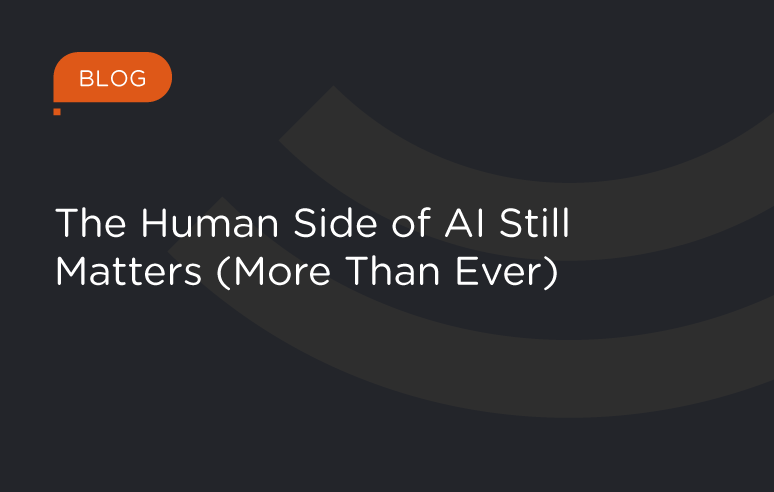AI is evolving fast, and right now, everyone’s talking about AI agents. And for good reason. When used the right way, they can completely transform the way customer service and support work. These aren’t just bots that follow a script or answer FAQs. True AI agents can understand a situation, make decisions, and take action on behalf of the customer. But here’s the catch: with great power often comes great cost, and without a clear strategy, the return on investment can quickly disappear.
That’s where the concept of agentic AI comes in. Agentic AI refers to the broader discipline of building intelligent systems that can operate with varying levels of autonomy, perceiving their environment, making informed decisions, and taking meaningful actions. AI agents are the software applications that bring these capabilities to life in customer service.
At Interactions, we believe the smartest way to bring agentic AI into your organization is with purpose. Not by deploying it everywhere, but by starting where it makes the most sense. In this blog, we’ll walk through what makes AI agents different, where they create the most value, and how to approach deployment in a way that works for your business and your customers.
Not All AI Agents Are Created Equal
There’s a lot of noise in the market right now. Nearly every tech vendor is claiming they offer AI agents, but many of these “agents” are really just rebranded virtual assistants. They might have a conversational interface, maybe even some generative AI behind the scenes, but they don’t meet the bar for true agentic AI.
A real AI agent does more than respond. It reasons. It perceives what’s happening, understands the context, and makes informed decisions about what to do next. It’s proactive, not reactive. It’s adaptable, learning from what works and adjusting based on new inputs. These are the capabilities that separate true agentic AI from the rest.
The Right Use Case Matters More Than the Technology
One of the biggest mistakes companies can make when introducing AI agents is trying to apply them everywhere. Just because the technology is exciting doesn’t mean it’s right for every situation. In fact, overusing AI agents can quickly drive up costs and create inconsistent results.
That’s why Gartner® describes what they call the “AI Agent Zone.” This is the sweet spot where AI agents shine – with interactions that are too complex. Think about scenarios like troubleshooting a device, upgrading a service, or making a return. These are often the moments where customers feel stuck or frustrated, and they’re exactly where an AI agent can step in to help.
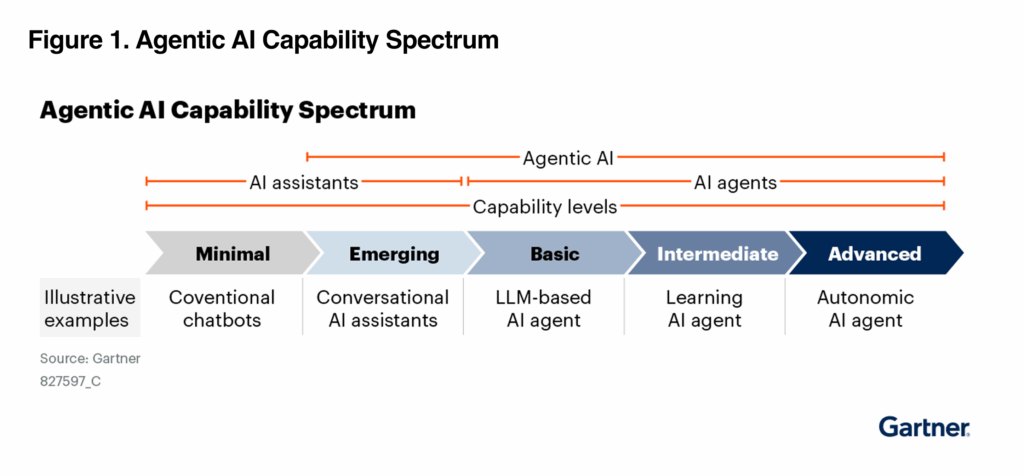
When deployed in the right zone, AI agents can deliver fast resolutions, reduce transfers, and ease the burden on your contact center. More importantly, they can improve the customer experience without adding unnecessary cost or complexity to your operations.
It’s All About the Tiered Approach
To get the most out of AI agents, it helps to think in terms of a tiered service model. At the bottom tier, you have no-touch self-service. This includes things like help articles or basic chatbots that handle simple tasks. It’s fast and inexpensive, but limited in what it can do.
The middle tier is low-touch service. This is where conversational AI comes in, helping customers navigate more involved issues or route them to the right place. It’s a good balance between automation and personalization.
The top tier is high-touch support, where human agents or subject matter experts handle complex or sensitive issues. This is where empathy and expertise really matter.
AI agents belong between the middle and top tiers. They’re ideal for interactions that go beyond what a basic bot can handle but don’t necessarily need a human. By placing AI agents at this mid-to-high point in your service model, you create a smoother path for customers and reserve your human team’s time for the moments that truly need them.
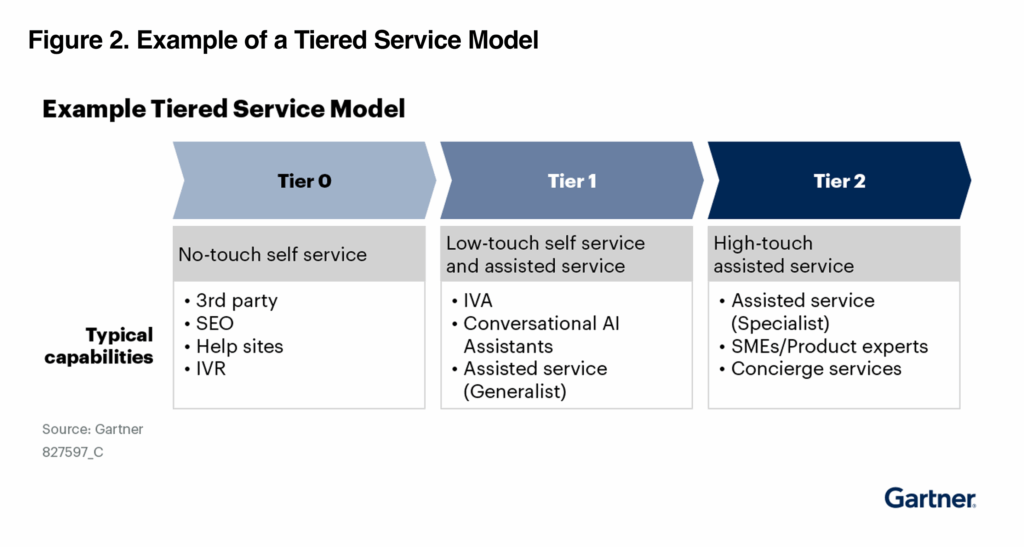
Start Small, Learn Fast, and Scale Intelligently
Another one of our key takeaways from the Gartner research is to avoid diving in too deep, too fast. Instead of launching AI agents across every touchpoint, start with a few high-impact use cases. Choose scenarios where you’re confident the technology will deliver value and where customer expectations are already high.
Many vendors offer AI agents at a “basic” level of capability to help organizations get started. These agents still bring powerful features like perception, decisioning, and actioning, but they’re easier to deploy and measure. Starting small gives your team the chance to test performance, fine-tune workflows, and build internal confidence before rolling out at scale.
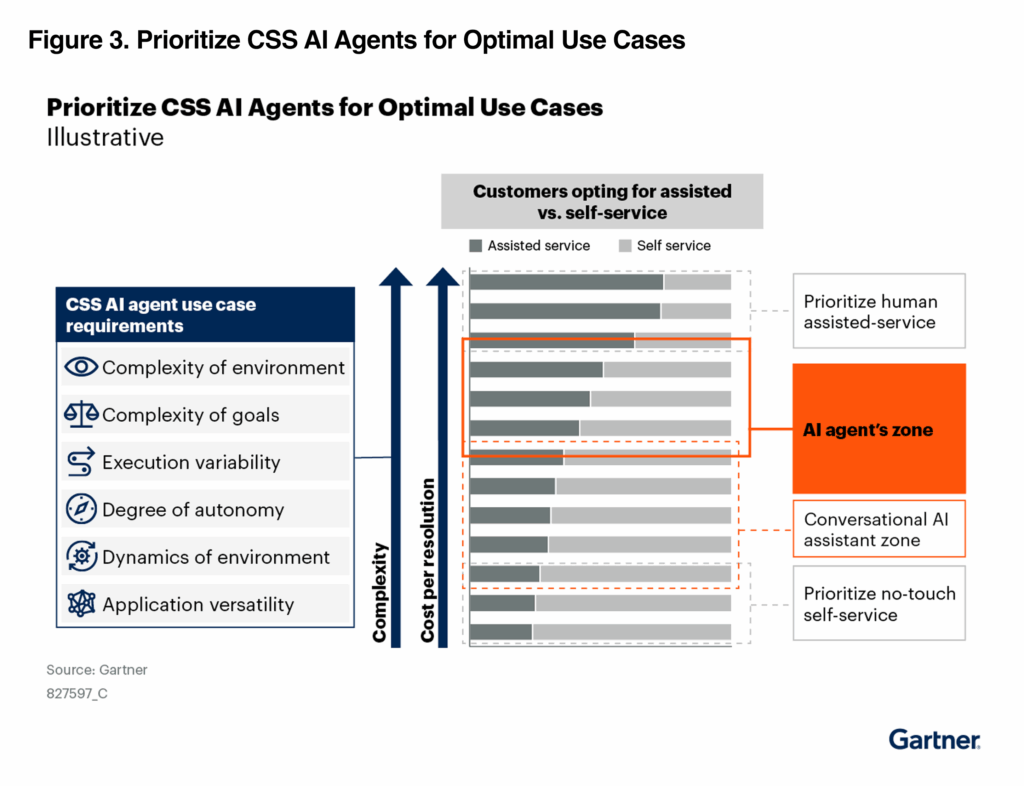
This step-by-step approach doesn’t just reduce risk, it sets you up for long-term success. By proving value early, you can secure buy-in, make data-informed decisions, and gradually move toward more advanced use cases as the technology and your organization mature.
Agentic AI Is Already Reshaping Customer Experience
According to Gartner, “By 2028, 60% of organizations will have deployed at lease one CSS agentic AI use case in production, up from less than 1% in 2024.” The shift is already underway, and companies that wait too long may find themselves playing catch-up. But the organizations that succeed won’t be the ones that moved first. They’ll be the ones that moved smartest.
With agentic AI, it’s not about checking a box or chasing a trend. It’s about using automation where it actually improves outcomes and letting humans focus on what they do best. That’s the kind of CX transformation that lasts.
At Interactions, we’re helping businesses lead this shift with Conversational AI that doesn’t just talk. It listens, understands, and acts. And it does so in a way that puts customers first, reduces effort, and builds trust across every interaction.
Want to see where AI agents make the biggest impact? Check out the full Gartner report for insights on identifying the right use cases.
Gartner, Ensure Benefits Outweigh Costs of AI Agents in Customer Service and Support, By Pri Rathnayake, 20 April 2025. Gartner is a registered trademakr and service mark of Gartner, Inc. and/or its affiliates in the U.S. and internationally and is used herein with permission. All rights reserved. This graphic was published by Gartner, Inc. as part of a larger research document and should be evaluated in the context of the entire document. The Gartner document is available upon request from Interactions LLC.
